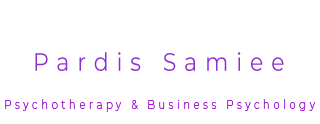Are you in a mood today? It’s not easy to think about moods if you’re in a bad mood! So take a deep breath, take a sip of your Monday morning coffee and continue if you feel happier…
WHY MOOD MATTERS?
Moods are short-term states of mind with a long-term effect on our overall well-being. So, although sometimes we can recognise what triggers our mood, they are usually born in a much deeper level.
Moods are essentially an unfocused state of consciousness and the best manipulators on earth! They control our thoughts, behaviour and feelings. Usually, they do such an amazing job it leads us to change the way we see our situation. Consequently, we tend to perceive or interpret any situation in a way that aligns with our mood! So, the phrase think happy thoughts is more than just a nice saying!
For example, if you are in a bad mood, you are likely to interpret your colleagues or boss’ comments in a negative way. That’s why it’s better to start building a friendship with our moods before they become our invisible yet powerful enemies.
GOOD MOOD, THE MYTH
There is no doubt that good moods have a positive effect on our mental and physical health, work and relationships. Like everything else, moods are better when experienced in moderation! Prolonged feelings of sadness, anxiety and stress are obviously terrible for us. However, the same can be said for an abundance of happiness! When we have happy-mood-overload it can drive us to a ‘La La land’ … scientifically known as a manic episode. This can result in extreme/risky behaviour.
Another negative effect of our extensive positive mood is the ‘disconnection’ it causes with the people around us. We become oblivious of others and eventually can drive us to become superficial and reduce our capacity to empathise and connect. We all know someone who drives us mad because they’re always so ridiculously positive and happy in all situations!
Just to be clear, always being in a good mood is a serious mental illness. Every healthy human being needs to be able to experience all moods. Our motto at the happiness index is ‘Freedom to be human’ and we encourage people to embrace their true selves. After all, we cannot flourish without accessing and celebrating our whole being.
LET’S MAKE ROOM FOR OUR BAD MOODS
We all hate being unhappy or in a bad mood… but the truth is, although some of them can be troublesome (especially if they are too intense or last too long), they can be an invitation to self-compassion and growth. They can bring you closer to yourself, help you discover some personal depths, make you re-evaluate your situation and initiate change. Researches shows that when you are in a bad mood and or being vulnerable, you are most likely to find friends that last longer! So, let’s not hate this awakening state and make the most of it.
I don’t want to dismiss the danger of intensive bad moods. Negative moods tend to attract negative situations that, in turn, reinforce our moods. This can become a vicious circle: e.g. you’re in a bad mood – you’re less likely to be present – productivity decreases – consequently you miss a deadline or project incompetency. The longer this goes on, the more energy and persistence is needed to alter it. Therefore, we need to moderate bad moods first, and our biology and a bit of willpower will do the rest to help overcome.
Let’s see how our moods can be addressed:
THE FIRST STEP: AWARENESS AND ACCEPTANCE
We all hate being unhappy or in a bad mood… but the truth is, although some of them can be troublesome (especially if they are too intense or last too long), they can be an invitation to self-compassion and growth. They can bring you closer to yourself, help you discover some personal depths, make you re-evaluate your situation and initiate change. Researches shows that when you are in a bad mood and or being vulnerable, you are most likely to find friends that last longer! So, let’s not hate this awakening state and make the most of it.
I don’t want to dismiss the danger of intensive bad moods. Negative moods tend to attract negative situations that, in turn, reinforce our moods. This can become a vicious circle: e.g. you’re in a bad mood – you’re less likely to be present – productivity decreases – consequently you miss a deadline or project incompetency. The longer this goes on, the more energy and persistence is needed to alter it. Therefore, we need to moderate bad moods first, and our biology and a bit of willpower will do the rest to help overcome.
Let’s see how our moods can be addressed:
THE FIRST STEP: AWARENESS AND ACCEPTANCE
Our moods, feeling and emotions need what we all need as humans: attention and acceptance! Just take a few minutes to acknowledge your mood, look at it as if it’s an external object which you want to understand. Close your eyes, feel it and accept it. Take a deep breath and explore your mood: ‘Oh gosh I am in such a bad mood today, I feel anger, I resent X and Y…’ Notice all of it, even the parts you hate to see or admit that exists. Get to know them first, you need to connect with your moods to create change.
SECOND STEP: ‘REALITY CHECK’
Your mood is influenced to some extent by your thoughts and beliefs. So, you can change your mood by recognising beliefs and thoughts that support it (e.g. ‘I will be fired, ‘my boss doesn’t like me’, ‘I am good for nothing’). Just write a list of things coming into your mind when you are in a mood and evaluate them. I am sure you see how unrealistic some of them are. Most of us tend to expect too much of ourselves and magnify or minimize non-favourable comments or situations.
Just remember the time your manager gives you a list of things you excelled at… and one bit of feedback on ‘room for improvement’. Some of us can’t stop thinking about that ‘room for improvement’ comment for hours, and some won’t even remember what it was after a minute! The trick is to recognise our beliefs and thoughts and check how real they are. I promise once you start evaluating them, you’ll be surprised to see that some of the things you call ‘a disaster’ are just in your mind.
THIRD STEP: ACTION
The hardest part is to take any action when you are in a mood… especially a bad mood!
The safest and easiest actions you can take when you are in a harmful state of mind (positive or negative) is either to do something you are good at or to make someone happy. It’s amazing that these two simple steps have proven to be the most effective interventions to change your mood! As a manager you can easily help your staff to lift their mood by giving them a task they are good at. If you aren’t attentive enough to notice their strengths or someone is new, then simply ask them!
If you couldn’t do any of the above, just explain your mood to someone you trust. Someone who wouldn’t judge, start giving advice or make fun of you. The important part is NOT to explore why you are in a specific mood but to just explain how it feels, how has it affected you physically and if you want to bring it to life and describe it is a shape: “I’m in such a bad mood today, I feel angry all the time, it makes me tired as if there is something heavy resting on my chest. If I close my eyes and imagine, it looks like a red cloud …” By the time you’re done with explaining you’ll feel much happier.
GO AND SHOW YOUR MOOD WHO’S BOSS
I hope these tips help you to have better control of your moods. In the next article, we will explore another element of happiness: ‘Mindfulness’ and the art of doing nothing. We will discuss how it can be used by different companies to create a happy workplace.




